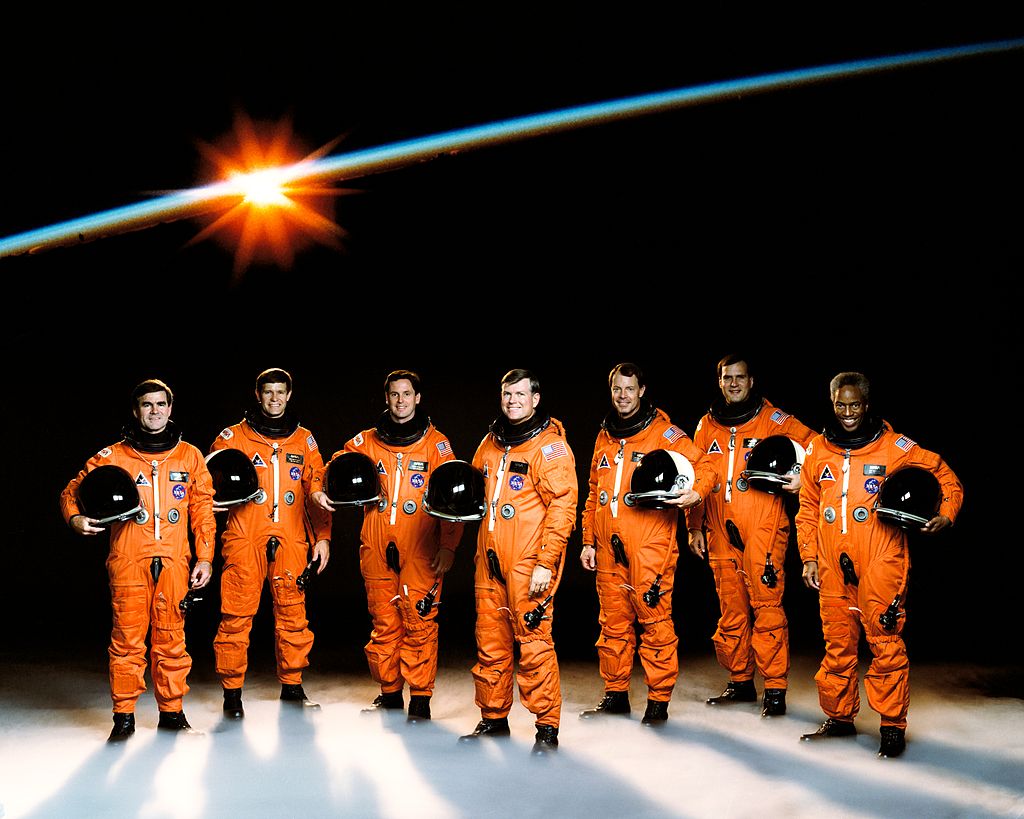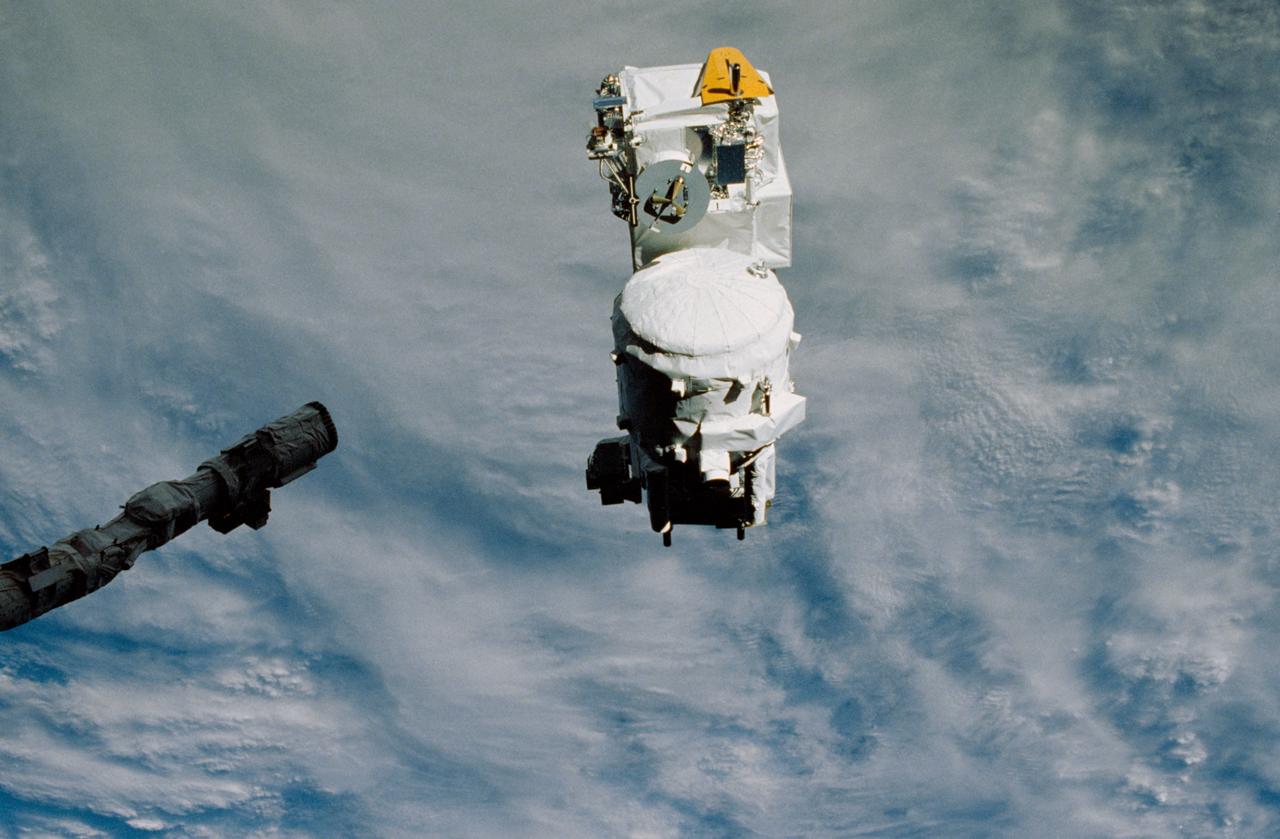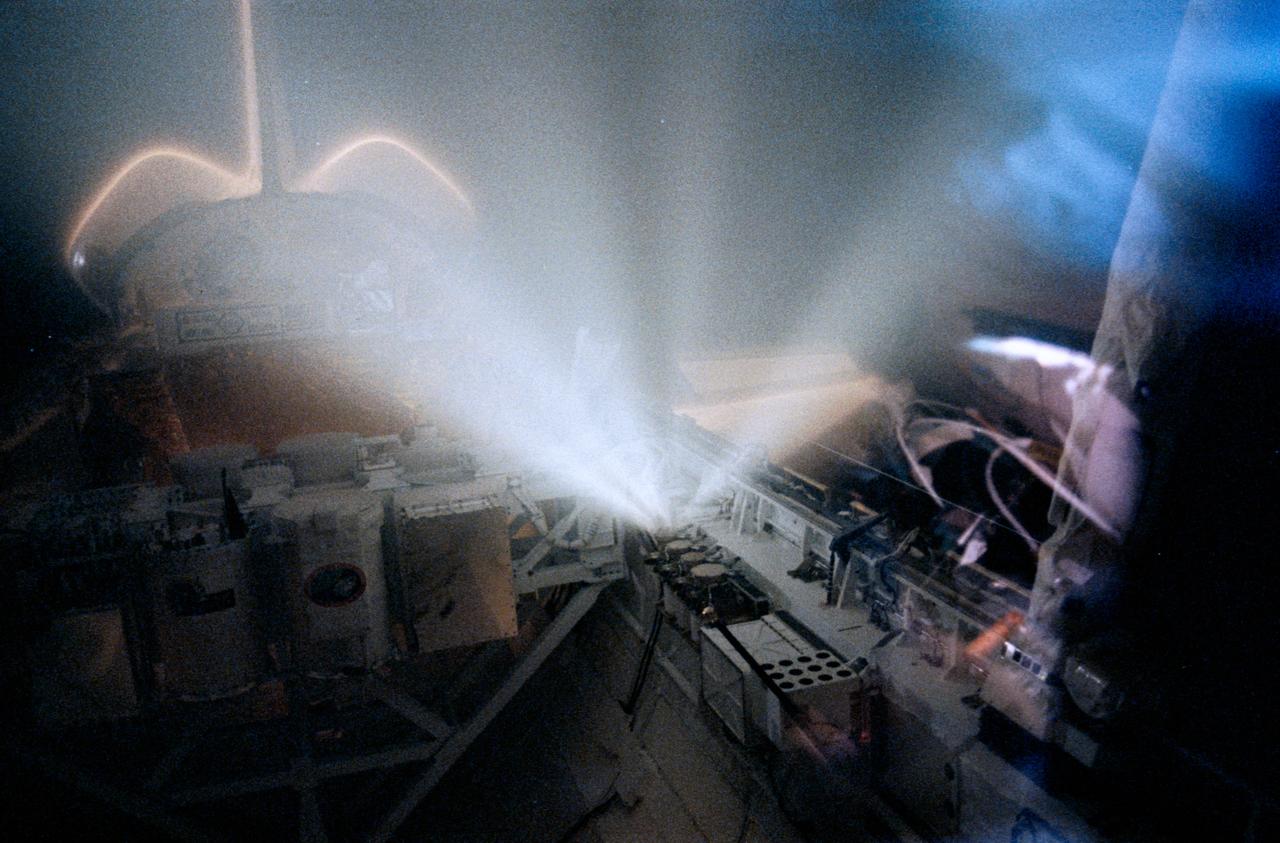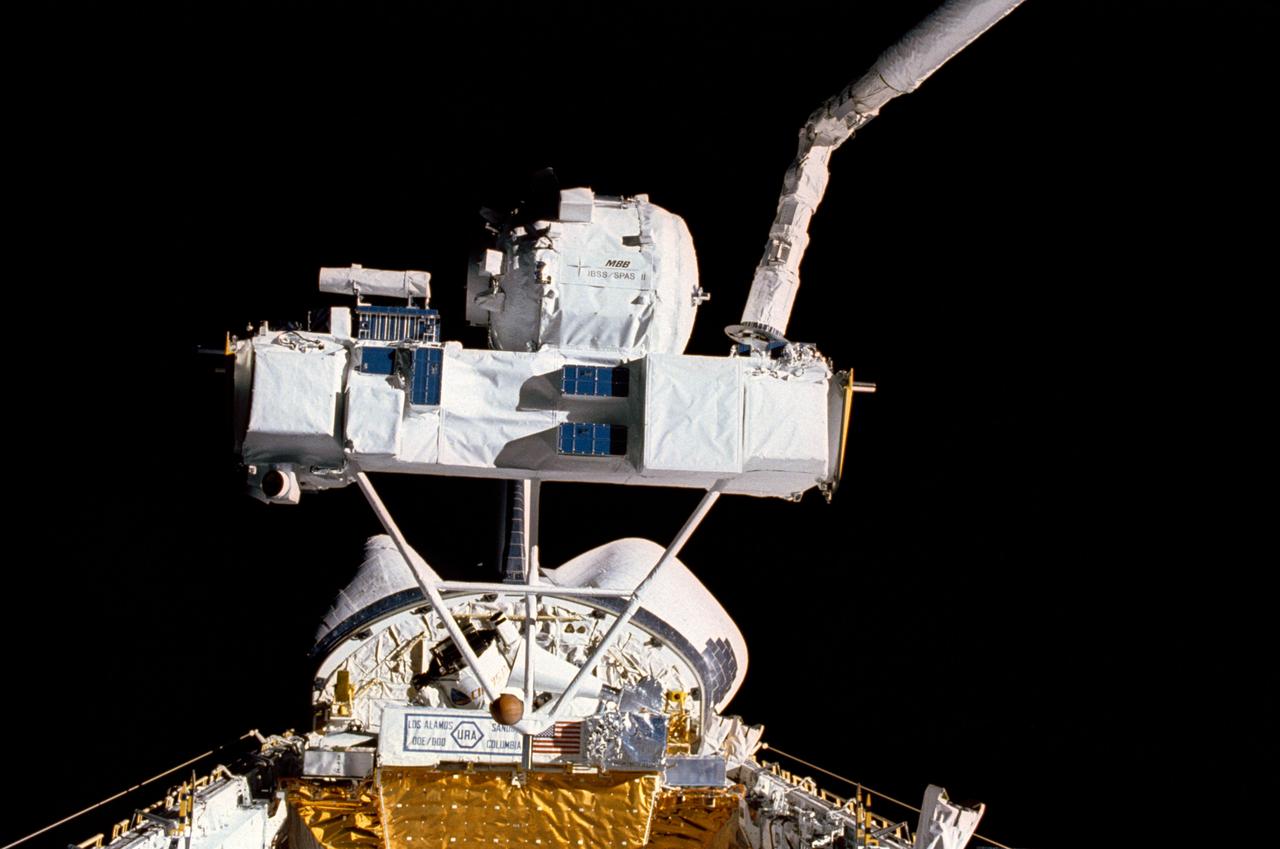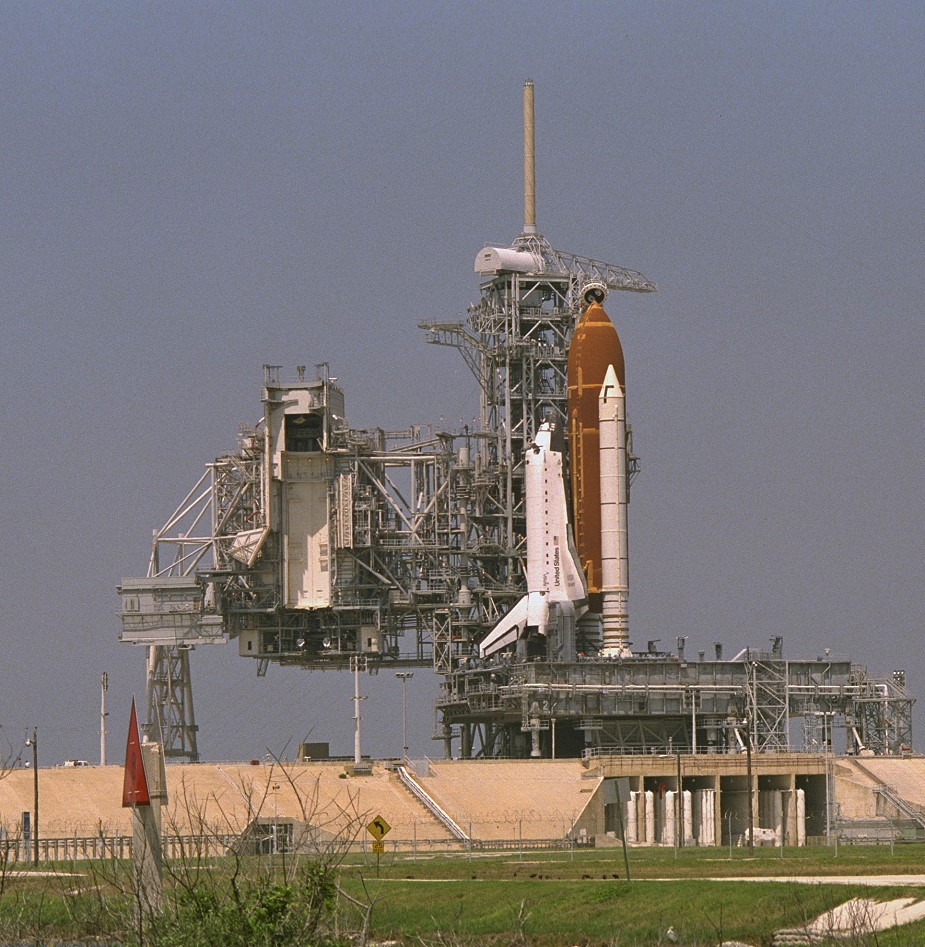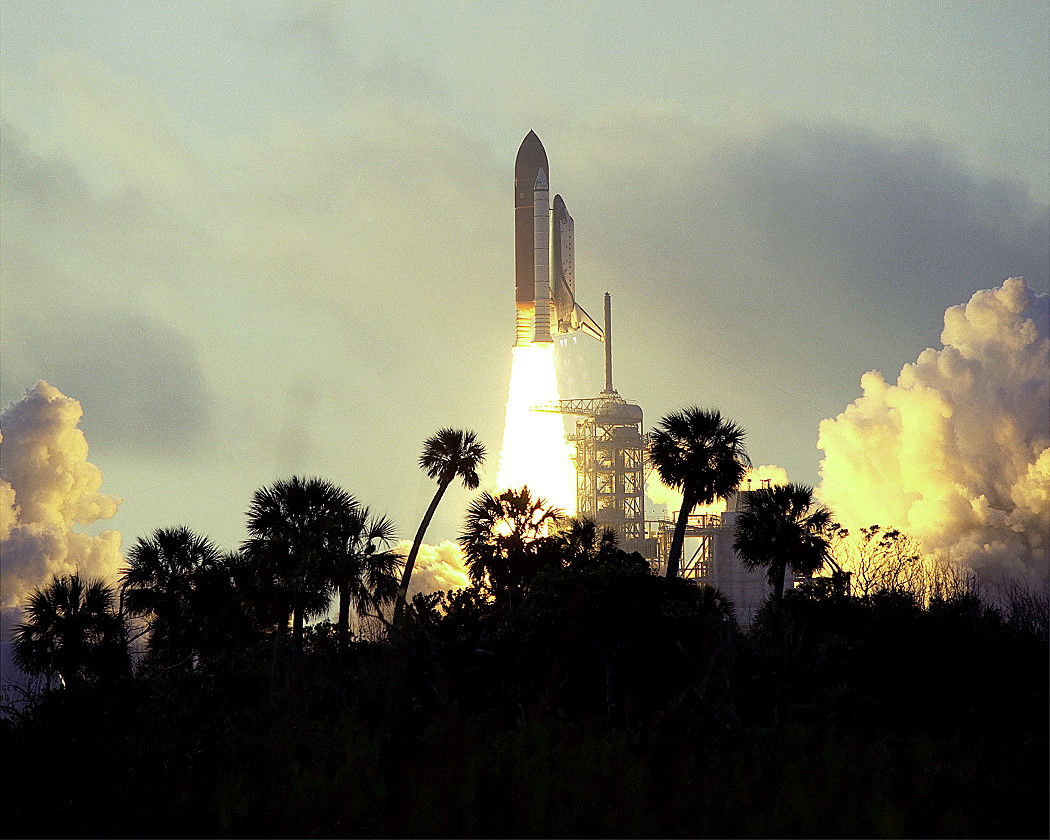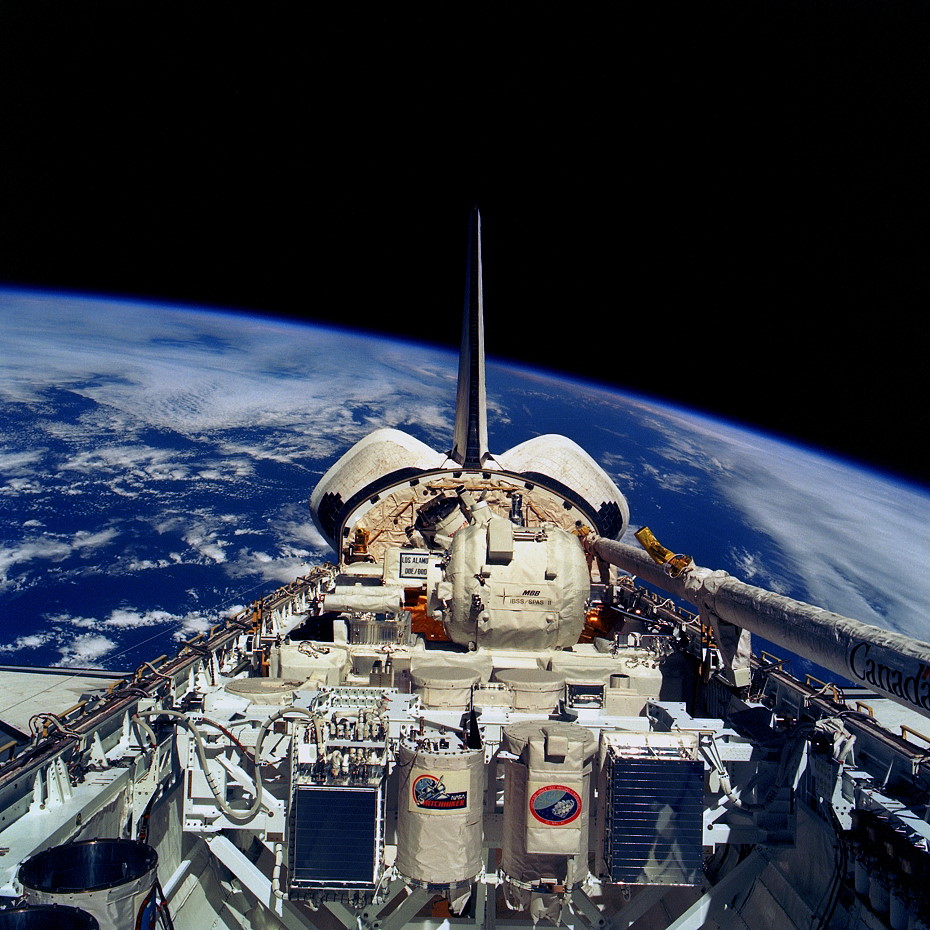STS-39 Fact Sheet
By Cliff Lethbridge

STS-39 — Discovery
40th Space Shuttle Mission
12th Flight of Discovery
Crew:
Michael L. Coats, Commander
L. Blaine Hammond, Jr., Pilot
Guion S. Bluford, Jr., Mission Specialist
Richard J. Hieb, Mission Specialist
Gregory J. Harbaugh, Mission Specialist
Donald R. McMonagle, Mission Specialist
Charles Lacy Veach, Mission Specialist
Orbiter Preparations:
Tow to Orbiter Processing Facility – October 17, 1990
Rollover to Vehicle Assembly Building – February 9, 1991
Rollout to Launch Pad 39A – February 15, 1991
Rollback to Vehicle Assembly Building – March 7, 1991
Rollover to Orbiter Processing Facility – March 15, 1991
Rollover to Vehicle Assembly Building – March 25, 1991
Rollout to Launch Pad 39A – April 1, 1991
Launch:
April 28, 1991 – 7:33:14 a.m. EDT. Launch was originally scheduled for March 9, 1991, but significant cracks were found on all four lug hinges on the two external tank umbilical door drive mechanisms while Discovery was at the launch pad.
Discovery was returned to the Orbiter Processing Facility for repairs. Replacement parts were taken from Columbia and reinforced for flight. Launch was rescheduled for April 23, 1991.
April 23 launch attempt was scrubbed due to out of specification readings on a transducer on Main Engine Number Three high pressure oxidizer turbopump. Transducer and harness were replaced and tested. Launch was rescheduled for April 28, 1991. April 28 launch time was not made public until T-9 minutes and counting.
Landing:
May 6, 1991 – 2:55:37 p.m. EDT at Runway 15, Kennedy Space Center. Rollout distance was 9,235 feet. Rollout time was 56 seconds. Mission duration was 8 days, 7 hours, 22 minutes, 23 seconds. Landing occurred during the 134th orbit. Landing was diverted to the Kennedy Space Center due to high winds at Edwards Air Force Base.
Mission Summary:
This was the eight dedicated Department of Defense Mission in the Space Shuttle program.
Unclassified payloads included Air Force Program-675 (AFP-675), Infrared Background Signature Survey (IBSS), Critical Ionization Velocity (CIV), Chemical Release Observation (CRO), Shuttle Pallet Satellite-II (SPAS-II) experiments and Space Test Payload-1 (STP-1).
A classified payload was confirmed to have employed a Multi-Purpose Release Canister (MPEC). Other unclassified payloads included Radiation Monitoring Equipment III (RME III) and Cloud Logic to Optimize Use of Defense Systems-1A (CLOUDS-1A).
SELECTED NASA PHOTOS FROM STS-39
